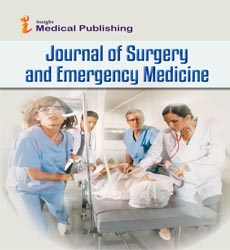The heterogeneous impact of sectoral foreign aid inflows on sectoral growth. Sur evidence from selected Sub-Saharan African and Mena countries
Abstract
A great deal of this literature finds that the net effect of aggregate aid on total growth appears to be insignificant and negative in most cases. The current study argues that the negative or insignificant net effect of aggregate aid on total growth can be better explained by testing the variation responses for each of growth sectors to their corresponding allocated aid inflows. Accordingly, the key questions we intended addressed are how and to what extent the heterogeneous impact of sectorally allocated aid inflows on their corresponding growth sectors (services, agriculture and industry) can affect the recipient countries’ economic development and growth using data from 37 Sub-Saharan African and MENA-recipient developing nations from 1996 to 2017. First, we investigated the extent to which MDGs tendency of aid allocation toward different developmental sectors and, thus, growth sectors in recipient countries is predictable (stable) or transitory in nature, and/or fungible, beneficial, or biased in terms of a decomposition analysis of growth sectors and their allocated aid. Then, we examined how the link between aid and growth depends on growth sectors’ responses to heterogeneous differences in aid allocated to developmental sectors and directed toward each of their corresponding growth sectors. To answer the two aspects of focus for the main questions of the study, we modelled three specifications for empirical analysis that progressed in their steps along with the lines and theoretical and empirical framework of the aid–growth literature. The first specification was modelled to define the first aspect of our question, it was carried out by operating covariates drawn from the major assumptions of neoclassical and endogenous growth aid–growth models in our decomposition analysis of sectoral aid on sectoral growth. The second and third specifications were designed to address the second aspect of the study question .For empirical analysis, the study constructed two measures for aids allocated to their corresponding growth sectors, introducing new disaggregation of sectoral aids measures; one was used as a major measure in the first two econometric specifications, and the revised Clemens early-impact aid categories measure, which was used as a secondary measure in the third specification. For empirical estimation techniques, the seemingly unrelated regression framework (SUR) was employed as the basic estimation approach while the GMM and Pooled OLS approaches were used to check robustness. The main findings of the three specification showed that aids allocated to each sector of growth as significant contributor in reducing or increasing the efficiency of their corresponding sectors and overall growth for SSA and MENA countries, these results help explain why the net effect of total aid on total growth appears to be insignificant or negative in overall growth.
Open Access Journals
- Aquaculture & Veterinary Science
- Chemistry & Chemical Sciences
- Clinical Sciences
- Engineering
- General Science
- Genetics & Molecular Biology
- Health Care & Nursing
- Immunology & Microbiology
- Materials Science
- Mathematics & Physics
- Medical Sciences
- Neurology & Psychiatry
- Oncology & Cancer Science
- Pharmaceutical Sciences
